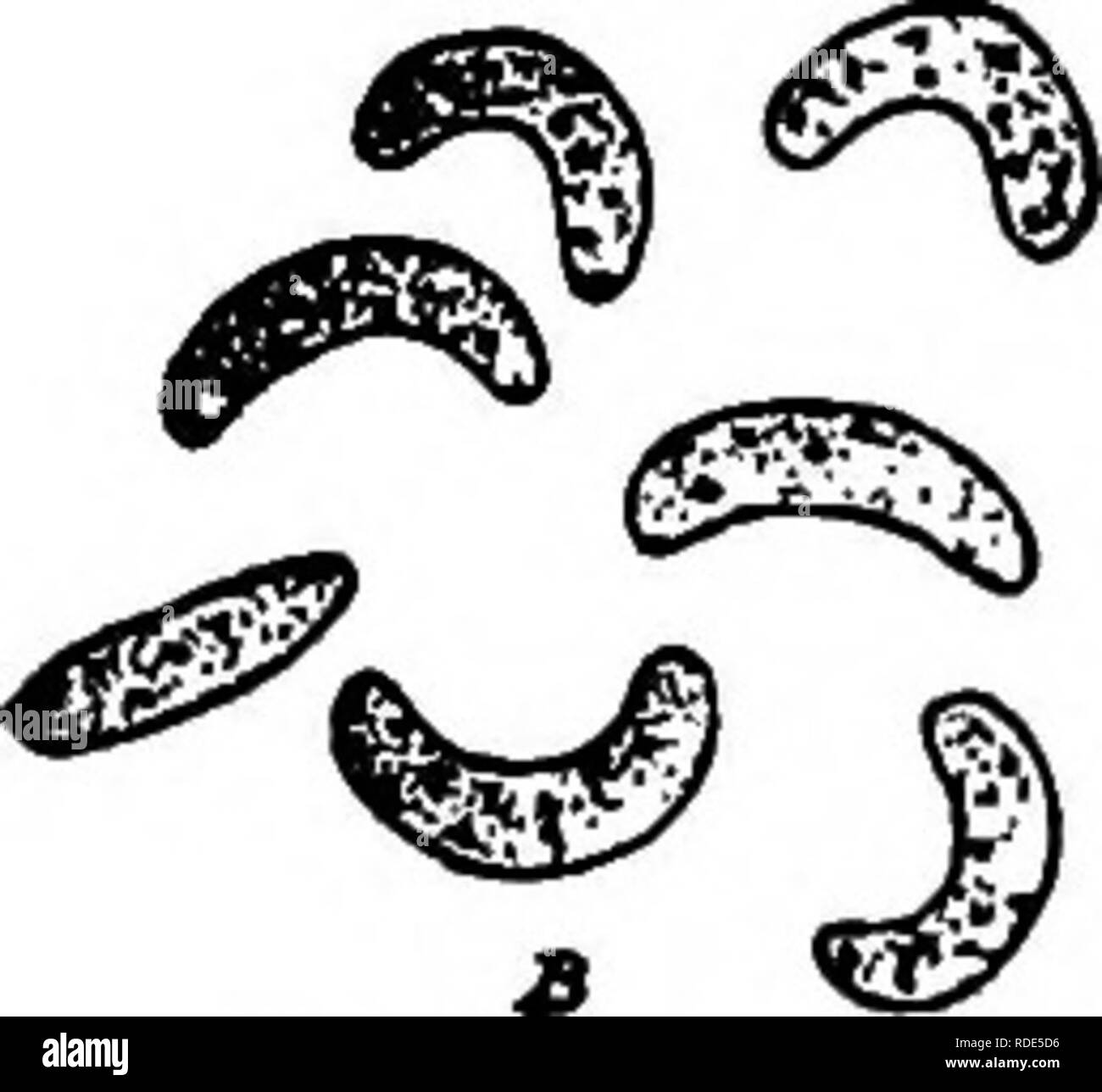. The fungi which cause plant disease . Plant diseases; Fungi. THE FUNGI WHICH CAUSE PLANT DISEASE 493 one on snapdragon,^^ another on Clematis roots,** and one on ap- ple*"^ Phomopsis Saccardo " (p. 482) As in Phoma, but with hooked conidiophores. A small genus. P. aloeapercrassee Trinch. is reported on scapes and flowers of the aloe in Italy. P. stewartii Pk. Perithecia gregarious, commonly occupying grayish or brown spots, thin, subcutaneous, at length erumpent, depressed, minute, Is- 12 xaxsx. broad, black; spores of two kinds, first; filiform, curved, flexuous or vmcinate, hyali

Image details
Contributor:
The Book Worm / Alamy Stock PhotoImage ID:
RDE5D6File size:
7.1 MB (168.5 KB Compressed download)Releases:
Model - no | Property - noDo I need a release?Dimensions:
1646 x 1518 px | 27.9 x 25.7 cm | 11 x 10.1 inches | 150dpiMore information:
This image is a public domain image, which means either that copyright has expired in the image or the copyright holder has waived their copyright. Alamy charges you a fee for access to the high resolution copy of the image.
This image could have imperfections as it’s either historical or reportage.
. The fungi which cause plant disease . Plant diseases; Fungi. THE FUNGI WHICH CAUSE PLANT DISEASE 493 one on snapdragon, ^^ another on Clematis roots, ** and one on ap- ple*"^ Phomopsis Saccardo " (p. 482) As in Phoma, but with hooked conidiophores. A small genus. P. aloeapercrassee Trinch. is reported on scapes and flowers of the aloe in Italy. P. stewartii Pk. Perithecia gregarious, commonly occupying grayish or brown spots, thin, subcutaneous, at length erumpent, depressed, minute, Is- 12 xaxsx. broad, black; spores of two kinds, first; filiform, curved, flexuous or vmcinate, hyaline, 16-25 x 1-1.5 n, second; oblong or subfusiform, hyaline, commonly binucleate, 8-12 x 2-3 /i; sporophores slender, equal to or shorter than the spores. The fimgus with its filiform spores only was noted as a parasite on Cosmos by Halsted who referred to it as a species of Phlyctaena.^* It has been noted in New York by Stewart, " and is destructive both in the greenhouse and in the open. Macrophoma Berlese & Voglino (p. 481) As in Phoma, but the ostiole of the pycnidium not papillate, and the pore smaller; conidia over 15 n long; conidiophores sim- ple, short or filiform. About one hundred seventy-five species. M. hennebergii (Kilhn) Berl. & Vogl. causes a serious disease on wheat in Sweden.*^ The fungus which appears in the literature as M. curvispora Pk. is in reality Gloeosporium malicorticis, see p. 542, and that referred to as M. malorum is Myxosporium corticolum. See p. 546. M. vestita Prill. & Del. attacks cacao in Ecuador. M. dalmatica (Thiim.) B. & V. parasitizes the ^^ 338.-1m. olive: M. taxi B. & V. attacks the leaves of spora, spores. Af- tcr Oordicv* Taxus; M. abietis M. & H. is associated with a fir disease; M. manihotis Hem. is on cassava; M. ligustica Mag- nag on Hydrangeas; M. helicinia Magnag on ivy.. a curvi-. Please note that these images are extracted from scanned page images that may have been digitally enhanced for readabilit